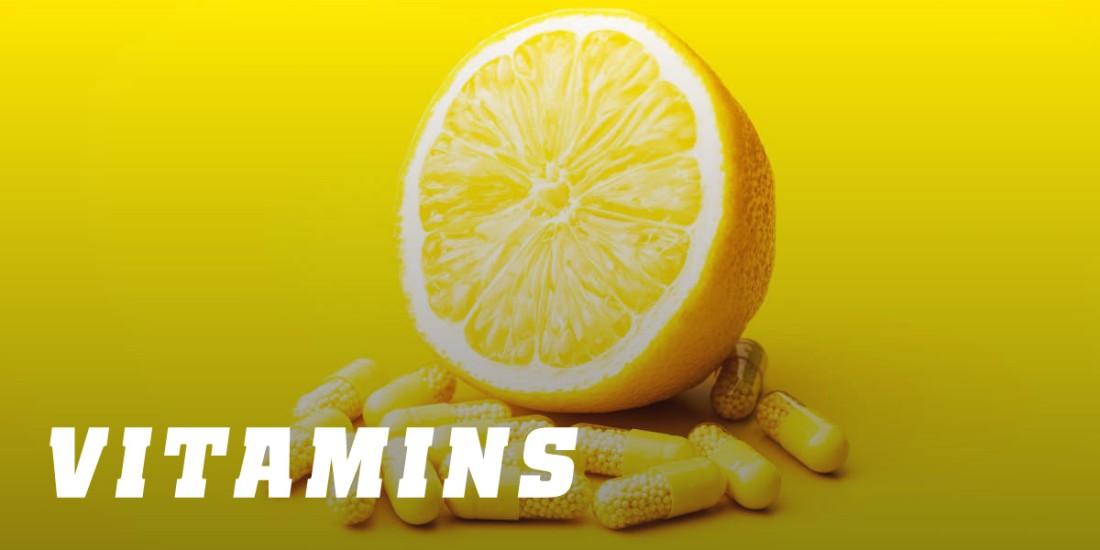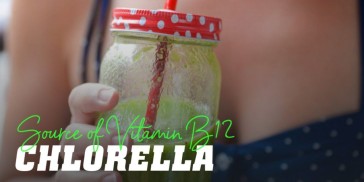What Is Vitamin C?
Vitamin C is a crucial micronutrient found in many foods of both animal and plant origin. It is essential for human life and plays a vital role in overall health.
Chemically, Vitamin C exists in different forms. The L-isomer is biologically active and provides the health benefits associated with the vitamin, while the R-isomer lacks vitamin activity.
The importance of Vitamin C in metabolism was first highlighted in 1927, leading to a Nobel Prize in Medicine for Hungarian scientist Albert Szent-Györgyi. Building on earlier work by Norman Haworth (Nobel Prize in Chemistry, 1937), Szent-Györgyi identified paprika as a rich natural source of the L-isomer of ascorbic acid, demonstrating its effectiveness in preventing scurvy. His research also revealed Vitamin C’s crucial role in cellular oxidation, a key aspect of metabolism.
Vitamin C primarily acts as a powerful antioxidant, protecting cell membranes from free radicals, which are highly reactive molecules that can damage DNA and cellular structures. Free radicals are formed naturally during metabolism as the body converts nutrients like glucose and fats into energy.
Beyond internal metabolic processes, free radicals are also generated from environmental sources such as tobacco smoke, air pollution, and UV radiation. Vitamin C helps neutralize these threats, supporting the body’s defense against oxidative stress and maintaining overall cellular health.
Functions of Vitamin C
Vitamin C plays a key role in a group of reactions known as hydroxylation, where an OH (hydroxyl) group is added to a compound, replacing a hydrogen atom and oxidizing the original molecule. This process is aided by coenzymes, which temporarily transfer chemical groups between enzymes without permanently becoming part of their structure. This distinguishes coenzymes from prosthetic groups, like the iron-sulfur clusters or heme groups found in hemoglobin, which are tightly bound to enzymes.
Vitamins, including Vitamin C, are classified as allogenic biocatalysts. This means they:
- Functionally catalyze biochemical reactions.
- Origin-wise must be obtained from external sources, as the body cannot synthesize them.
Interestingly, humans lost the ability to produce Vitamin C naturally about 2.5 million years ago. Early bipedal hominids consumed diets rich in vegetables and animal organs, which provided sufficient Vitamin C. Without these dietary sources, humans are fully dependent on external intake, and a deficiency can lead to scurvy, a disease caused exclusively by lack of Vitamin C.
Properties of L-Ascorbic Acid
Some notable properties of L-ascorbic acid include:
- High boiling point: 553°C.
- Toxicity in large amounts: Approximately 12 g/kg in rats.
- Organoleptic properties: Tasteless and odorless.
- Water solubility: Highly soluble, up to 33 g per 100 ml of water.
Because Vitamin C is water-soluble, any excess is excreted in the urine. This is a normal process: high intake may slightly darken urine and give it a stronger odor, which is not harmful. In rare cases, very high concentrations can irritate the bladder and cause frequent urination.
Vitamin C in Cancer Prevention and Treatment
Research suggests that individuals who consume high amounts of vitamin C through their diet may experience a reduced risk of several types of cancer, including lung, breast, and colon cancer.
However, the relationship between vitamin C and cancer prevention or treatment is somewhat complex and controversial. Its effectiveness appears to depend heavily on the method of administration. Some studies indicate that oral supplementation, whether taken alone or with other antioxidants, may have limited impact on cancer prevention.
While vitamin C plays a vital role in overall health and cellular protection, more research is needed to fully understand its role in cancer prevention and therapy.
Vitamin C and Cardiovascular Health
Consuming Vitamin C-rich foods may help reduce the risk of cardiovascular diseases. One reason for this protective effect is that oxidative damage to cells is a major trigger of heart and blood vessel disorders, and vitamin C’s antioxidant properties help counteract this damage.
Vitamin C for Eye Health: Macular Degeneration and Cataracts
Macular degeneration and cataracts are leading causes of vision loss among older adults. Research suggests that Vitamin C, especially when combined with other essential nutrients, may slow the progression of age-related macular degeneration and protect the lens from damage, helping to maintain better eye health over time.
Vitamin C and the Common Cold
Vitamin C has long been celebrated as a remedy for the common cold, though research shows that taking supplements does not necessarily prevent one from catching a cold. Despite this, there is evidence that systematic supplementation—for example, around 3 grams per day (well above the recommended 80 mg/day)—can reduce the severity and duration of cold symptoms.
The scientific basis for this effect lies in Vitamin C’s ability to enhance the production of interferons and antibodies, which are crucial components of the immune system that help the body fight cold viruses.
Vitamin C and Collagen Synthesis
Vitamin C plays a fundamental role in collagen production, the main structural protein in the human body. Collagen forms the matrix of subcutaneous connective tissue, bones, tendons, ligaments, gums, and mucous membranes, as well as structures like blood vessel walls, muscles, and internal organs.
After the age of 30, the body’s collagen levels decline significantly, accelerating tissue aging and loss. Since collagen from food cannot directly supply the body with this protein, endogenous production becomes crucial.
Vitamin C works alongside amino acids like hydroxyproline and hydroxylysine, which are essential for collagen synthesis. Without adequate levels of these amino acids and vitamin C, the biochemical reactions needed to produce collagen cannot occur, highlighting the vital role of this nutrient in maintaining healthy skin, tissues, and overall structural integrity.
Vitamin C: An Important Stress Mediator
Interestingly, the adrenal glands contain the highest concentration of vitamin C in the body. This is because Vitamin C is crucial for the synthesis of hormones such as adrenaline, noradrenaline, and glucocorticoids. During periods of stress, the body’s demand for Vitamin C increases, as these hormones are key players in the biochemical cascade of the general adaptation syndrome, commonly referred to as stress.
Additionally, adrenaline and noradrenaline function as essential neurotransmitters in the brain, influencing mood, attention, and cognitive performance. Adequate Vitamin C levels are therefore vital for both stress response and brain function.
Vitamin C Against Oxidative Stress
During periods of high metabolic demand, such as intensive physical activity, the body experiences a metabolic imbalance that increases the production of free radicals. Vitamin C plays a crucial role in counteracting these effects by inhibiting the harmful cascade initiated by free radicals.
In environments with constant exposure to oxidative stress—for example, polluted air or excessive ultraviolet (UV) radiation—the body’s requirement for Vitamin C rises, as it is one of the most effective tools to neutralize free radicals.
As a powerful antioxidant, Vitamin C helps maintain cellular balance and protects vital components, such as preventing the DNA in skin cells
Main Sources of Vitamin C
There’s a common misconception that oranges are the richest source of Vitamin C. In reality, a single orange provides about 69 mg, whereas a bowl of strawberries offers 85 mg, a slice of mango 122 mg, and a red pepper can contain up to 200 mg.
Almost all fruits and vegetables contain some amount of Vitamin C. The best sources include:
Fruits: Oranges, grapefruits, kiwi, mango, papaya, pineapple, strawberries, raspberries, blackberries, blueberries, watermelon, and melon.
Vegetables: Broccoli, Brussels sprouts, cauliflower, red and green peppers, spinach, cabbage, green turnip, leafy greens, white and sweet potatoes, and tomatoes.
Some processed cereals and fortified foods may also provide Vitamin C, though typically in smaller amounts.
Vitamin C from Food: Handling and Cooking
Vitamin C is highly sensitive and can degrade with excessive cooking or long storage. Steaming or microwaving preserves more of its content compared to boiling. Eating raw fruits and vegetables, like peppers, chard, broccoli, and strawberries, helps maximize Vitamin C intake.
Recommended Daily Amounts of Vitamin C
The following amounts refer to healthy individuals:
Infants:
0–6 months: 40 mg/day
7–12 months: 50 mg/day
Children:
1–3 years: 15 mg/day
4–8 years: 25 mg/day
9–13 years: 45 mg/day
Adolescents:
Girls 14–18: 65 mg/day
Boys 14–18: 75 mg/day
Pregnant adolescents: 80 mg/day
Lactating adolescents: 115 mg/day
Adults:
Men: 90 mg/day
Women: 75 mg/day
Pregnant women: 85 mg/day
Lactating women: 120 mg/day
Certain groups may require higher intake, including smokers, infants fed with evaporated or boiled cow’s milk, individuals with limited diets, and people with malabsorption, cancer, hemodialysis, or other health conditions.
Common Myths About Vitamin C
Citrus juice must be consumed immediately – True: Vitamin C oxidizes upon exposure to air; freshly squeezed juice retains the most nutrients.
Citrus burns fat – False: Citrus does not directly burn fat, but it can reduce cholesterol and act as an antioxidant.
Vitamin C prevents or cures colds – Mostly false: While it may reduce symptom severity and duration, it cannot prevent colds.
Vitamin C is good for bones – True: It aids calcium utilization and is essential for collagen production, supporting healthy bones, connective tissues, and skin.
Citrus fruits are the only source – False: Foods like peppers, chard, broccoli, strawberries, and cauliflower contain even more Vitamin C than oranges.
Do You Need Supplementation?
While it is ideal to obtain Vitamin C from natural food sources, supplements can be helpful for those who do not consume enough fruits and vegetables.
Forms of supplements include:
L-ascorbic acid: Most common form.
Ascorbate salts: Sodium, calcium, magnesium, or manganese ascorbates, often easier on the stomach.
Ascorbic acid with bioflavonoids: No significant difference in absorption compared to plain vitamin C.
Ascorbyl palmitate: Fat-soluble form used topically or in supplements, may protect cell membranes from oxidative stress.
Supplement formats: Tablets, capsules, powders, chewables, and crystalline forms. Dosage and absorption can vary, so it is important to check labels carefully.
Precautions and Interactions
High doses may interact with chemotherapy or radiotherapy, potentially protecting tumor cells.
Combining Vitamin C with other antioxidants during cholesterol-lowering therapy may require monitoring.
Excessive intake during pregnancy could affect the baby’s vitamin C levels.
Certain medications, surgeries, infections, diabetes, digestive disorders, and excessive alcohol or tobacco use can increase Vitamin C requirements.









The information below is required for social login
Sign In
Create New Account